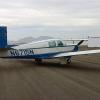Fuel tank sealant removal machine
-
Members Online
- IFLYIFR
- Justin Schmidt
- 47U
- M20S Driver
- thomas1142
- spistora
- TravelingIA98
- TheAv8r
- hammdo
- Scott Ashton
- flyingscot
- Schllc
- Fly Boomer
- Pilot Guy
- AZOutlaw
- Nico1
- takair
- KSMooniac
- Jake@BevanAviation
- redbaron1982
- Bartman
- Hank
- RobF
- DXB
- TaildraggerPilot
- rpcc
- markgrue
- Stealth Mooney
- Denis Mexted
- MoonMan
- EarthboundMisfit
- Flyler
- NickM20F
- Ragsf15e
- 201Mooniac
- Guillaume
- bencpeters
- EricJ


Recommended Posts